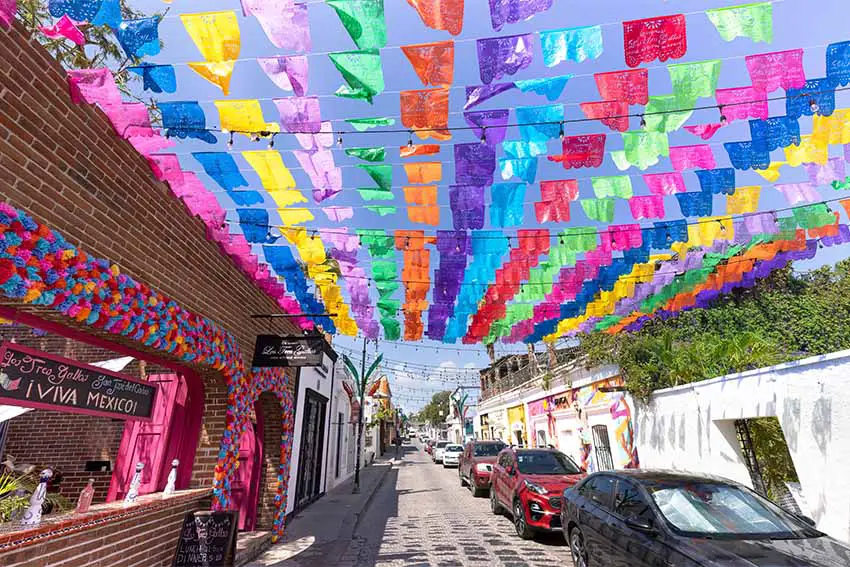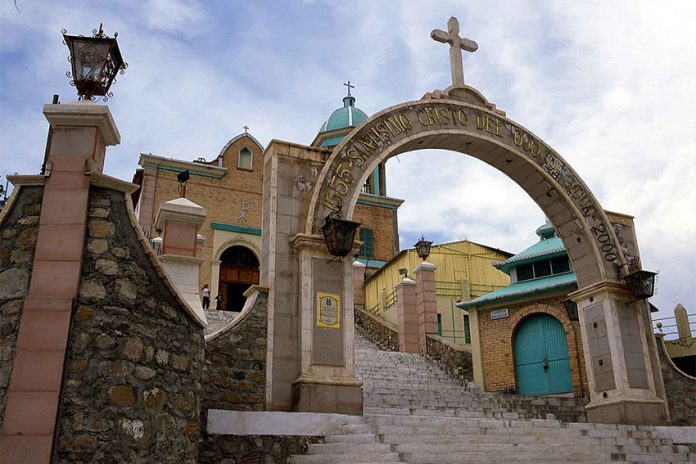Mexico’s Tourism Ministry (Sectur) has added 12 more city neighborhoods across the country to its Barrios Magicos program (Magical Neighborhoods), designating them as urban neighborhoods across Mexico worth visiting for their cultural value and tourism activities.
The 12 newly designated Barrios Mágicos, located in 12 different states in Mexico, are:
- La Estación, in the city of Aguascalientes, in the state of Aguascalientes
- the historic center of San José del Cabo, Baja California Sur
- Ojo de Agua, in the city of Saltillo, Coahuila
- the historic center of Colima city, Colima
- Tenayuca-Santa Cecilia, in the city of Tlalnepantla, México state
- Tetelcingo, in the city of Cuautla, Morelos
- Bellavista, in the city of Tepic, Nayarit
- San Francisco “El Origen,” in Puebla city, Puebla
- San Francisco Anbanica, in the city of Querétaro, in the state of Querétaro
- Paseo del Ángel, in the city of Culiacán, Sinaloa
- the historic center of Victoria, Tamaulipas
- Mexicapan, in Zacatecas city, Zacatecas

Sectur granted the new designations during the third edition of the International Tianguis de Pueblos Mágicos, a Sectur tourism trade fair held this year in San Antonio, Texas.
To qualify as a Barrio Mágico, Sectur requires said magical neighborhood to not only have cultural and historic value but also be part of a borough, city or large-sized metropolitan area. It should also facilitate the integration of products and services, be representative of the city, have infrastructure and connectivity, and be linked to other tourist destinations through thematic routes or circuits, according to Sectur.
“A Barrio Mágico represents a space that combines several elements that make it unique and unrepeatable: history, culture, gastronomy, products and services, as well as the coexistence of the local population with visitors,” Tourism Minister Miguel Torruco Marqués said when the federal Barrios Mágicos program was launched in 2022. “It is a place where you can discover the ‘spirit’ and essence of a city.”
The program aims to draw tourists to Mexico’s major cities in a similar way to the Pueblos Mágicos (Magical Towns) program, which highlights towns across Mexico with historical and cultural value. The Pueblos Mágicos program has proven to be an important tourism driver to its over 170 member towns.
Just as with the Magical Towns, Magical Neighborhoods receive funding from the local government to rehabilitate the area and improve public lighting, sidewalks and building facades.
In its first stage, the newer Magical Neighborhoods program aims to recognize at least one Barrio Mágico in each of Mexico’s 32 states, in cities that due to their large area and population, do not qualify as Pueblos Mágicos.

Sectur’s Barrios Mágicos program was modeled after a successful Mexico City program first created by CDMX’s state tourism ministry in 2011 during the presidency of Felipe Calderón, who declared 2011 as the Year of Mexican Tourism.
Also called Barrios Mágicos, the Mexico City program’s 21 member neighborhoods at the time were the first neighborhoods designated in Sectur’s national program when it launched. Some Mexico City Barrios Mágicos folded into the Sectur program include Xochimilco, Polanco, Villa de Guadalupe and Tacubaya.
Other Sectur Barrios Mágicos that have already been named in other Mexican states include the historic center of Chetumal, Quintana Roo; La Ermita in Mérida, Yucatán; and La Chinesca in Mexicali, Baja California.
According to Sectur data, it has, to date, named a total of 209 Pueblos Mágicos and Barrios Mágicos.
Mexico News Daily
